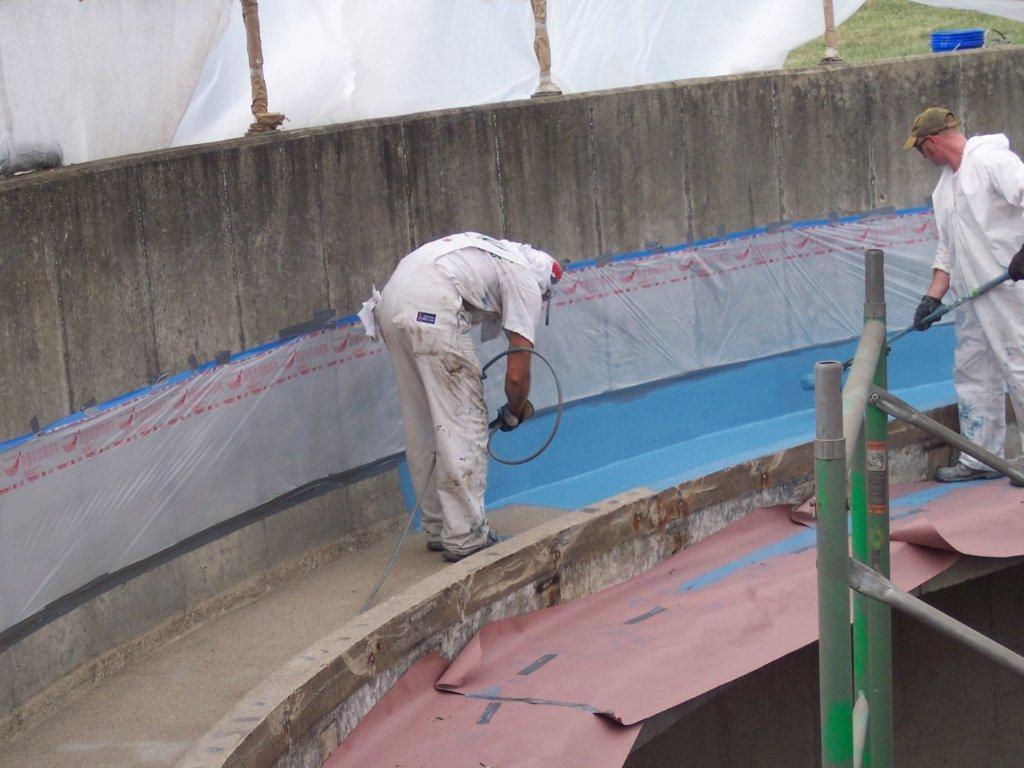 By: Bill Seawell, Induron Technical Service Manager
By: Bill Seawell, Induron Technical Service Manager
Water and wastewater treatment plants require a variety of industrial coatings due to their diverse service environments. From potable water immersion to aeration basins, each service requires a specialized coatings solution for corrosion protection. The goal of this treatment plant coatings blog series is to inform owners and engineers of the best questions to ask when communicating with contractors and paint manufacturers to determine an ideal engineering solution.
In a previous blog, we covered potable water storage interiors. Today, we will consider another class of assets for coating: basins and channels.
Immersion in EQ Basins, Aeration basins, Influent Channels & Clarifiers
Basins, influent channels and clarifiers are a large part of the water treatment real estate. These are usually large, high-dollar assets with specialized corrosion protection needs. Plus, it is often difficult to keep them dry long enough to be coated. These areas require great care when considering how they are to be coated or re-coated.
Here, we have a service like potable water storage, but with a few additional variables. Depending on where the service is in the water treatment process, the lining may or may not need to be NSF certified.
The additional complicating factors on these types of services include:
- Weathering: Many components of clarifiers, aeration basins and other “open top” tanks are subjected to sunlight and ambient weather conditions. The epoxy products typically selected for their chemical and immersion resistance tend to not do as well in these conditions, so depending on aesthetic needs, one may elect to use a urethane topcoat (over said epoxy) or some other solution entirely such as direct to metal urethanes.
- Varying chemical exposures: Depending on where in the process the service is, basins, channels, and clarifiers may expose their linings to chlorine, alum or raw wastewater as well as the low pHs and hydrogen sulfide that come along with wastewater. The solution for these various exposures is very case dependent. Talk with coating manufacturers to determine the best solution here.
- Concrete: Most open top types are concrete construction rather than steel. Concrete comes with its own unique set of challenges. For instance, concrete is a very inconsistent substrate and surface conditions can vary wildly from tank to tank or even within the same tank. Oftentimes, degraded concrete will require the use of a cementitious resurfacing product, such as an epoxy cementitious mortar, like Induron’s Mortarchem, to bridge the transition between degraded concrete and any lining that will be applied.
All things considered, basins and channels usually benefit from having a thick film epoxy system in place (typically 20-50 mils or so). Cementitious epoxy mortars are often a good choice for leveling the substrate and forming a strong bond between the concrete and lining material.
A good specification for these types of systems will consider not just the service conditions themselves but also the site conditions that will be present at the time of application. Will the lining be applied during cold weather months? Many epoxy linings do not cure well under 50 °F or so. What sort of concrete surface preparation is required of the lining? An ICRI CSP 2 is easily achieved with angle grinding, but is blasting feasible? Some products may require an SSPC SP-13 shotblast to produce an ICRI CSP 5.
These are all things that must be considered when picking a lining system and writing a job specific specification.
Interested in learning more about treatment plant coatings?
Contact an Induron representative today. Our ceramic epoxies have been protecting water, wastewater and sewer structures for over 30 years.
